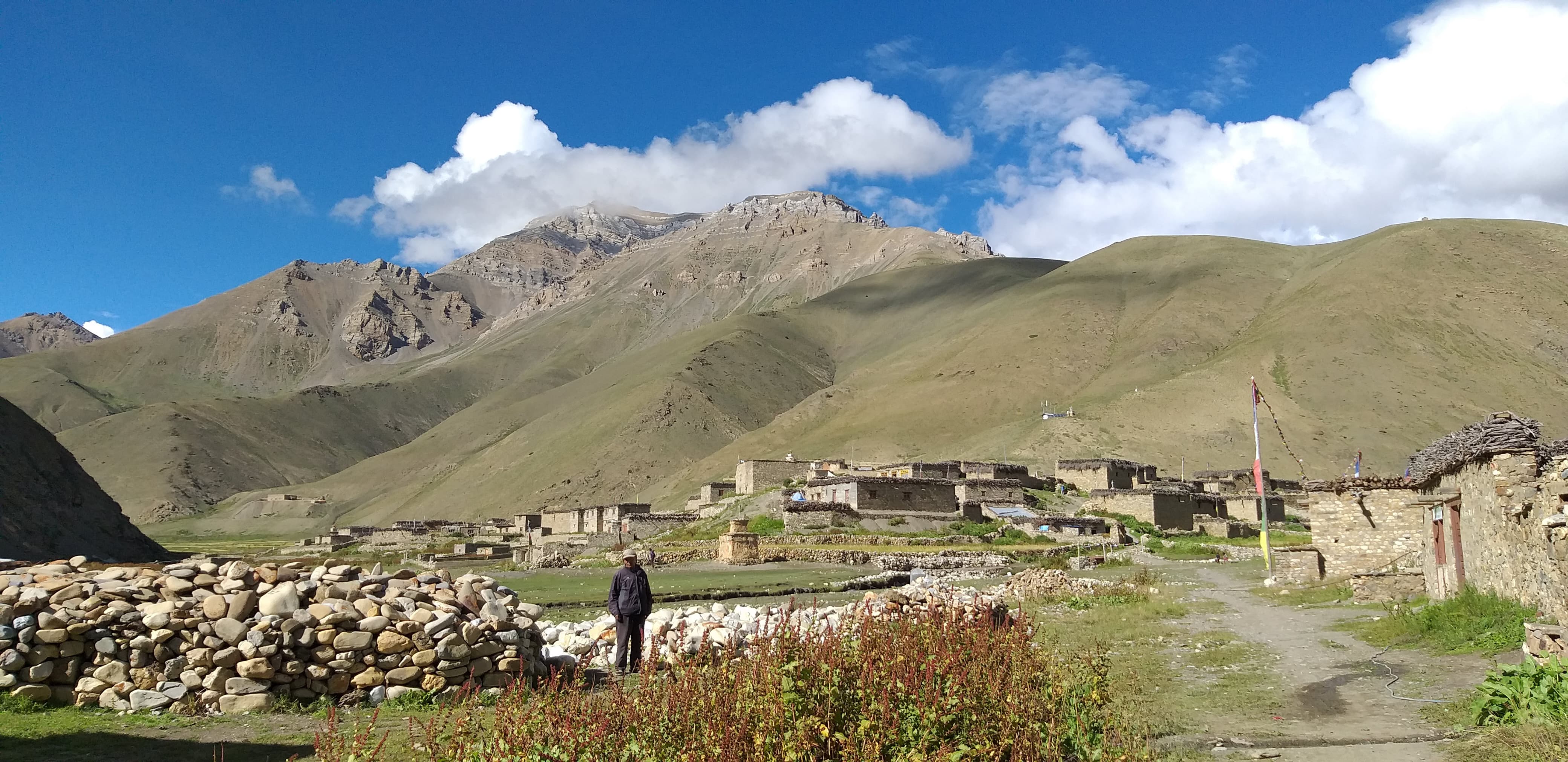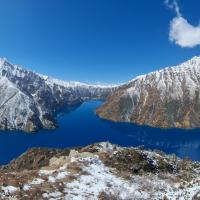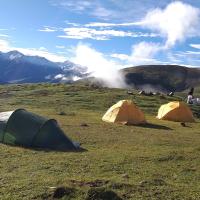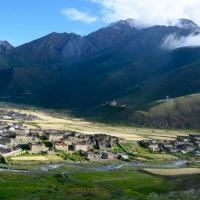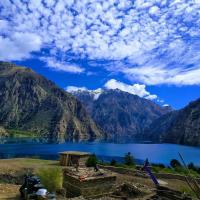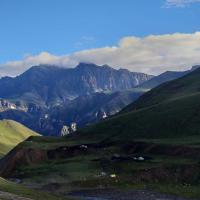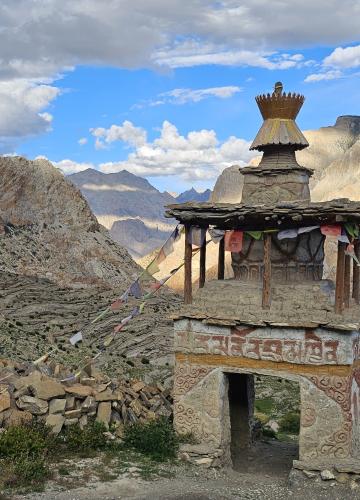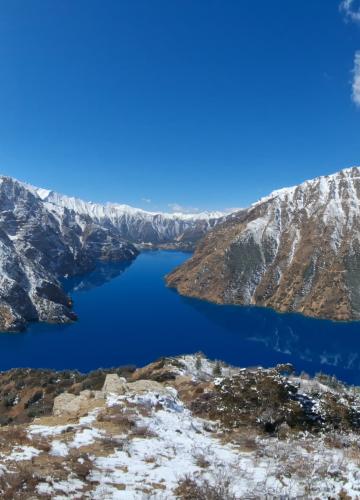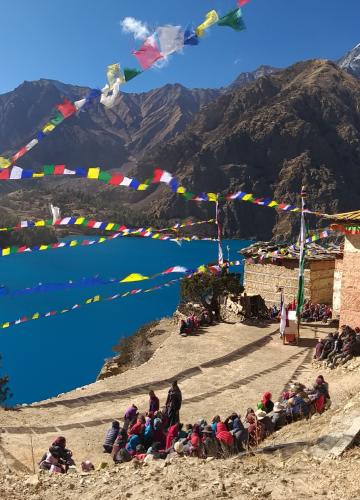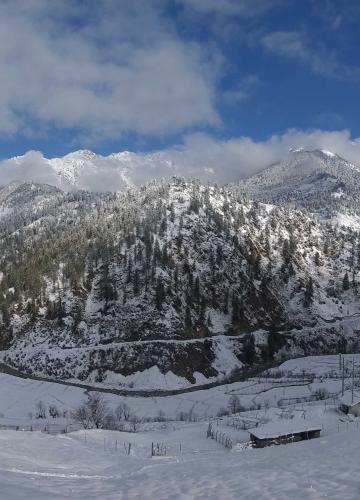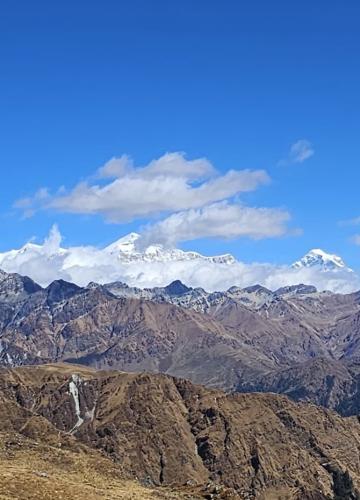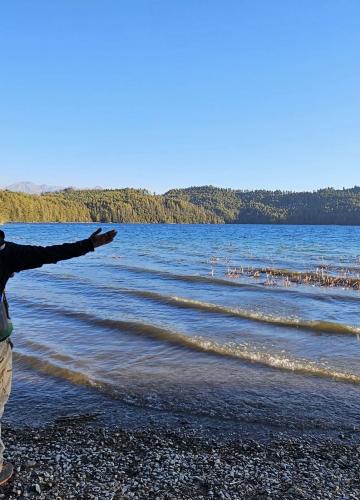If you desire a trekking to explore remote zone of Nepal and to get to see the unseen then the Lower Dolpo Trek can be the perfect one for you. Located in the western part of Nepal, Lower Dolpo is a secluded area that provides the remoteness of a true wilderness trek overlaid with traditional Tibetan culture and stunning mountain views that can be nearly as spectacular as the well-worn paths to the areas such as the Everest and Annapurna regions.Lying on the trans-Himalayan route, Lower Dolpo trek offers nice opportunity to explore the concealed gems of Nepal such as the High altitude passes, meditation monasteries and sapphire watered lakes.
The Lower Dolpo Trek is a journey into one of the most remote and mystical regions of Nepal. Nestled within Shey Phoksundo National Park, this trek offers a raw and authentic Himalayan experience. From the iconic Phoksundo Lake with its surreal turquoise waters to the rugged trails that pass through ancient Buddhist monasteries, yak caravans, and windswept high-altitude deserts, every moment of this trek is magical.
Unlike the more commercialized trekking routes of Nepal, the Lower Dolpo Trek takes you off the beaten path, offering peace, solitude, and cultural immersion. If you're looking for an adventure that combines breathtaking natural beauty with cultural discovery, the Lower Dolpo Trek should be at the top of your list.
Why Choose the Lower Dolpo Trek?
Let’s picture a scenery where life performance feels like being in the middle of nowhere! Where mountains with heads shrouded in snow and territory of immense desert and arid lands, and where nomadic Yak grazers still herd their cattle across the mountains. This is Dolpo. It really does feel as though by visiting such a place you are transported to a different time and space – at least in the sense of infrastructure as this trek is not even remotely like the well-trodden tourist trail that defines the Nepalese Himalayas.
Off-the-beaten-path adventure: Whereas in the more famous trails like those of Everest or Annapurna, there are many trekkers, in Dolpo the situation is different. You may trek for days without meeting other groups of trekkers again!
Cultural immersion: Dolpo has considerably Tibetan Buddhist resonance and during the journey, you will visit some old monasteries, chortens and the prayer flags will be unfurled beautifully in the wind.
Breathtaking landscapes: The Lower Dolpo region boasts of a plethora of natural beauty that is unparalleled in the entire country of Nepal- this includes the beautiful blue waters of Phoksundo Lake and the all majestic Dhaulagiri range.
Wildlife encounters: It’s possible to get a glimpse of a snow leopard or Blue sheep if you are blessed and lucky to see these magnificent animals on the slope of the hills.
Best Season to Trek Lower Dolpo
It is suggested that the best time to go for Lower Dolpo Trekking is during the pre-monsoon part including March to May and during post monsoon part including September to November during which weather condition is quite favorable, the sky is often clear and the view is panoramic. Autumn is advisable for trekking because the temperature is mild and the mountains are equally colorful, but before this the trekking season in spring also favors trekkers and the temperament is rather good due to the blooming rhododendrons. During the day, it isn’t extremely hot, and at night the weather is cooler, and there are less people on the road rather than on more popular routes. Perhis is believed to be the right time for trekking since the weather is good ad the view of the mountains is clear. There is sunshine every day, and the heat during the day when hiking is mild and splendid. It also encompasses the Nepalese festival seasons particularly the Dashain festival and Tihar festival giving ethnic views of the villages.
However, June to August is the monsoon and though Dolpo is in this area, due to the geographical location, the monsoon does not bring in much of the wet season to the region. Less crowded and more foliage is another plus, but occasional, sometimes muddy trail, and flight cancellations are a possibility. Winter, December-February is the best time but the treks are less recommended because of freezing temperatures and snow on the passes. For lovers of a better experience, the May early to mid and mid-September to early October are ideal in terms of weather and activities, together with the natural Himalayan views.
What to Expect on the Lower Dolpo Trek
The Lower Dolpo Trek kicks off with a flight from Kathmandu to the remote village of Juphal, where you leave behind modern comforts and dive into Nepal’s untouched landscapes. One of the trek’s highlights is the stunning Shey Phoksundo Lake, a turquoise gem surrounded by cliffs and forests, near Ringmo Village, where Tibetan Buddhist culture thrives. Crossing the Numa La Pass (5,115m) and Baga La Pass (5,070m) is challenging but rewarding, offering panoramic views of snow-capped peaks.
As you trek deeper, you’ll explore ancient Tibetan monasteries, including the mystical Shey Gompa, and immerse yourself in the rich culture of the local people. The region’s wilderness is home to blue sheep, musk deer, and the rare snow leopard, making Dolpo a dream for nature lovers and adventurers alike.
Is the Lower Dolpo Trek Right for You?
The Lower Dolpo Trek is perfect for experienced trekkers who are looking for an authentic, off-the-beaten-path adventure. This is a strenuous trek, involving long days of walking at high altitudes, so it’s ideal for those who have some trekking experience and are ready for a challenge.
However, if you’re up for it, the rewards are immense. You’ll experience landscapes, culture, and wildlife unlike anything else in Nepal. If you crave a journey where you can truly disconnect and immerse yourself in nature and local traditions, Lower Dolpo won’t disappoint.
Essential Tips for Lower Dolpo Trek
Physical Preparation: This trek is classified under moderately difficult, therefore doing a lot of physical exercises is advised. Check that one is capable of handling long walks as well as high altitude challenges.
Altitude Sickness: The trek is at relatively high altitudes, hence the need to spend a few days before the start of the trip. Take note of signs of acute altitude illness.
Pack Smart: Wear warm clothes, bring good quality boots and other sports wear. Relative nighttime temperatures are much lower than in the warm season regardless of the month.
Permits: Make sure you have the right trekking permits. It is because Dolpo is the restricted zone of Nepal, so the special permit is needed, and usually, the trekking agency manages it.
Respect Local Culture: Said to be blessed with ample cultural values, Dolpo is well endowed with the same. It is very important to respect the culture of the people you intend to interact with as well as people’s institutions such as monasteries and traditional villages.
Contact us now to learn more and to Customize Your Lower Dolpo Trek
